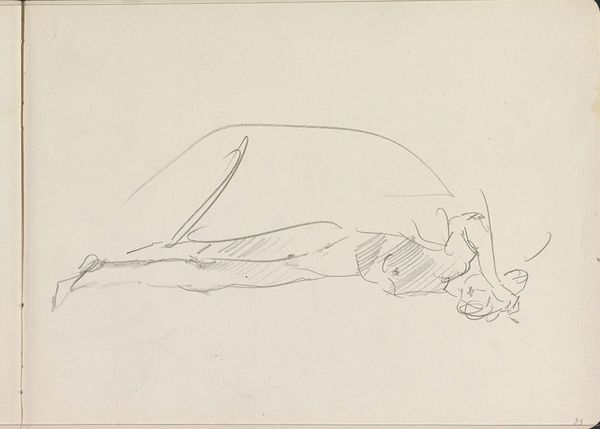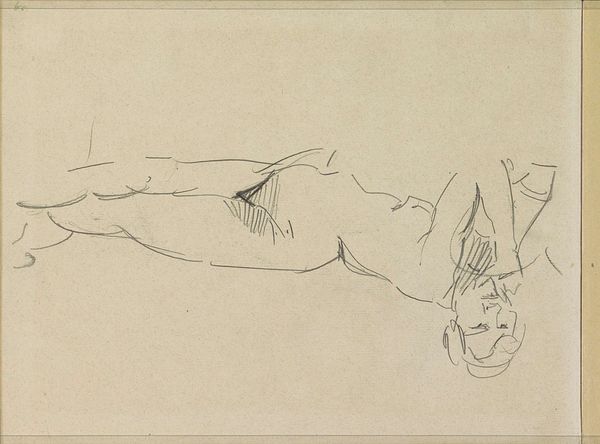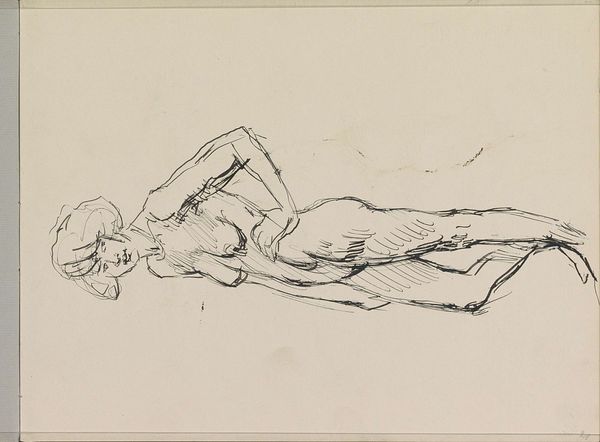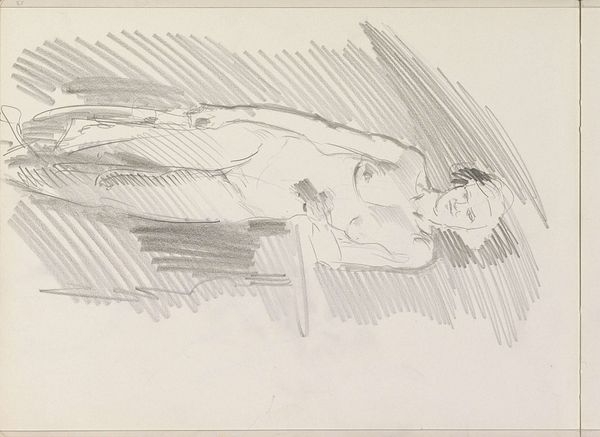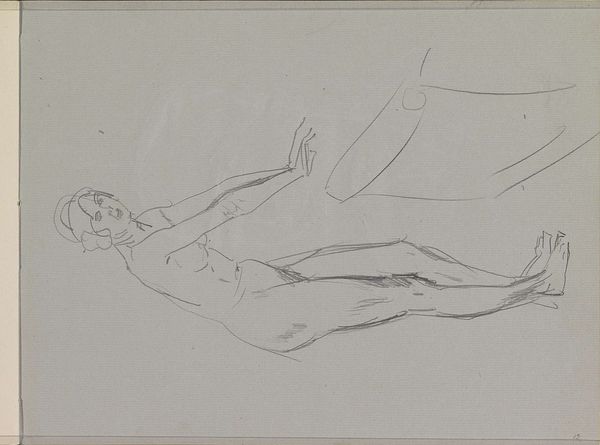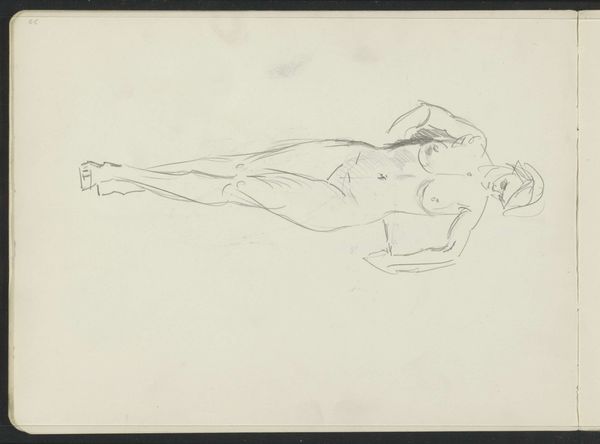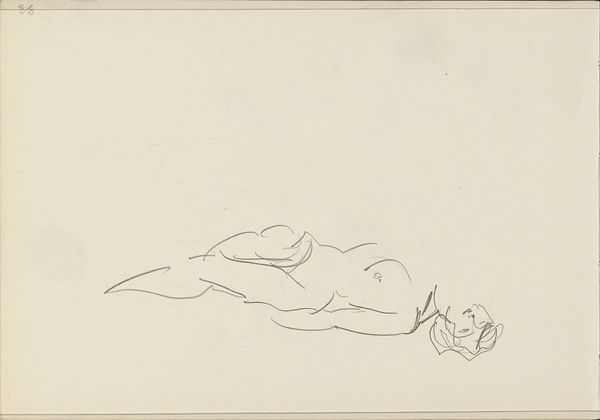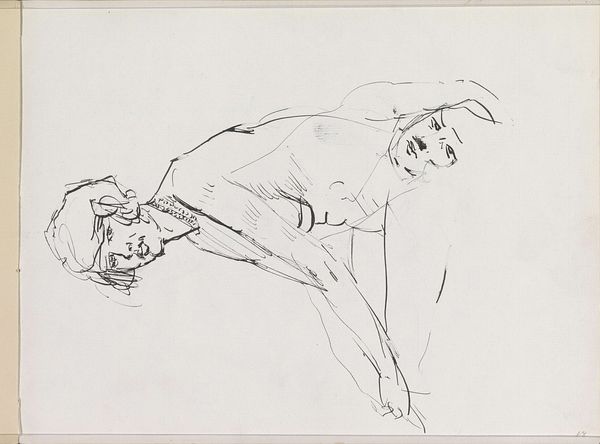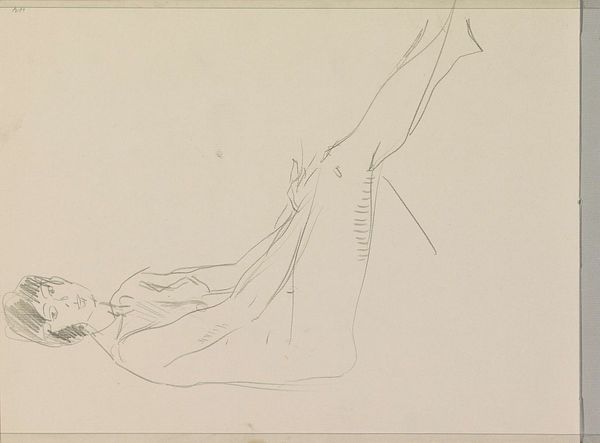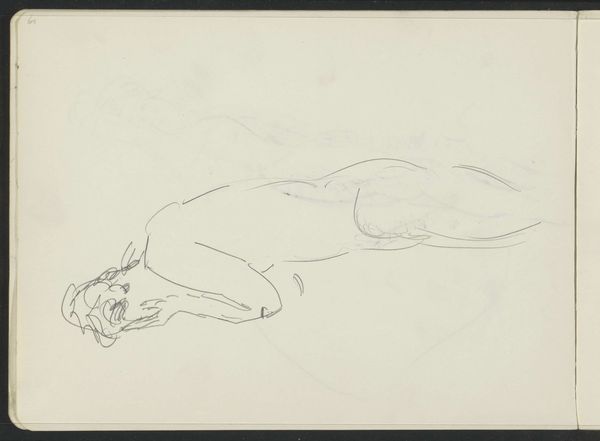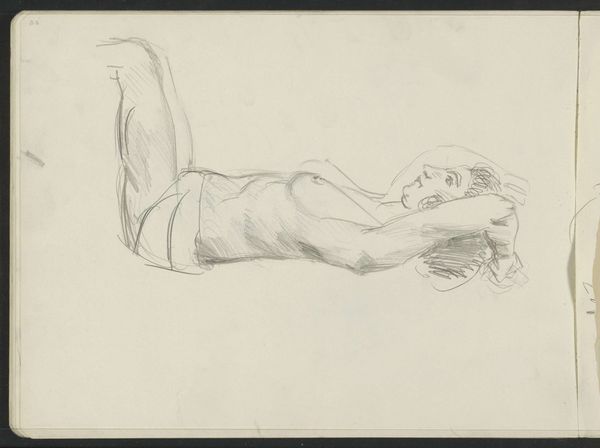
Copyright: Rijks Museum: Open Domain
Editor: Here we have Isaac Israels' "Vrouwelijk naakt op een bank," a pencil drawing on paper from somewhere between 1915 and 1925. There’s something so raw and intimate about it. It feels like we're glimpsing a private moment, an artist capturing a fleeting impression. How do you interpret this work? Curator: It is tempting to see this as a personal sketch. But if we look more closely, this seemingly simple sketch carries a significant cultural weight, revealing shifting perceptions of the female form. Note how Israels uses a fragile pencil line to describe the intimate interior space surrounding the model. Editor: I do see that. There’s a kind of vulnerability to it, accentuated by the medium, and how lightly the body is sketched. It makes the image feel somehow more intimate, wouldn’t you say? Curator: Precisely. Consider also the art-historical context. How might societal attitudes toward the nude figure, combined with Israels' own artistic style, have shaped the emotional content of this drawing? This delicate rendering serves not to simply represent, but perhaps even to safeguard an image. Editor: It’s amazing how much we can infer from just a few lines. This really highlights the power of suggestion in art. Curator: Indeed. The lack of precise detail leaves room for our imaginations to fill in the gaps, connecting the drawing to our own memories and experiences related to depictions of intimacy and human form. The symbols reside within each of us, unlocked by this image. Editor: I hadn't thought about it that way. Looking at it now, it feels like it’s as much about what's *not* there as what *is*. Thank you, that’s really given me a lot to consider. Curator: My pleasure. Hopefully, now you’ll appreciate just how impactful the absence of detail and formal style may impact one’s interpretations of an image and how symbols evolve over time.
Comments
No comments
Be the first to comment and join the conversation on the ultimate creative platform.
